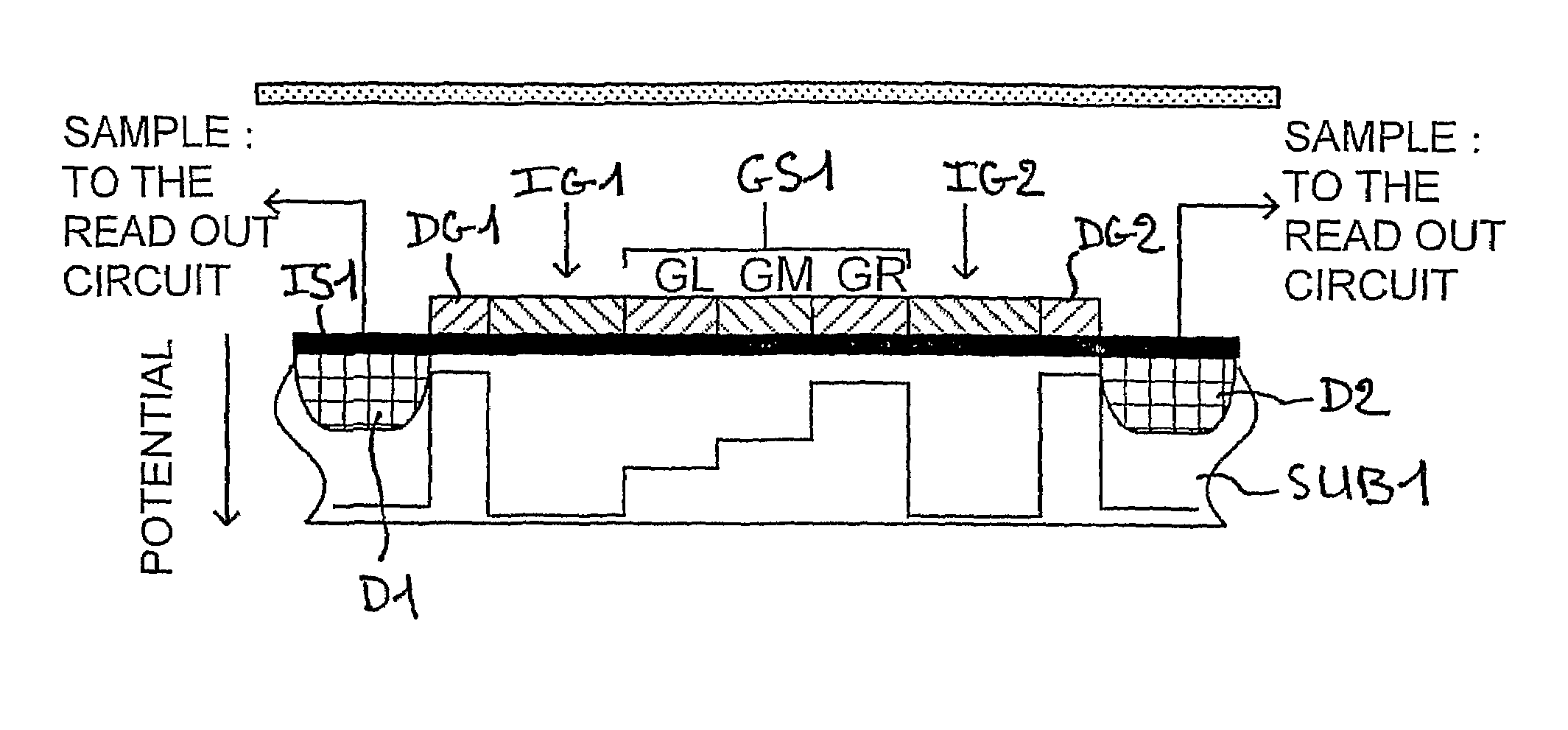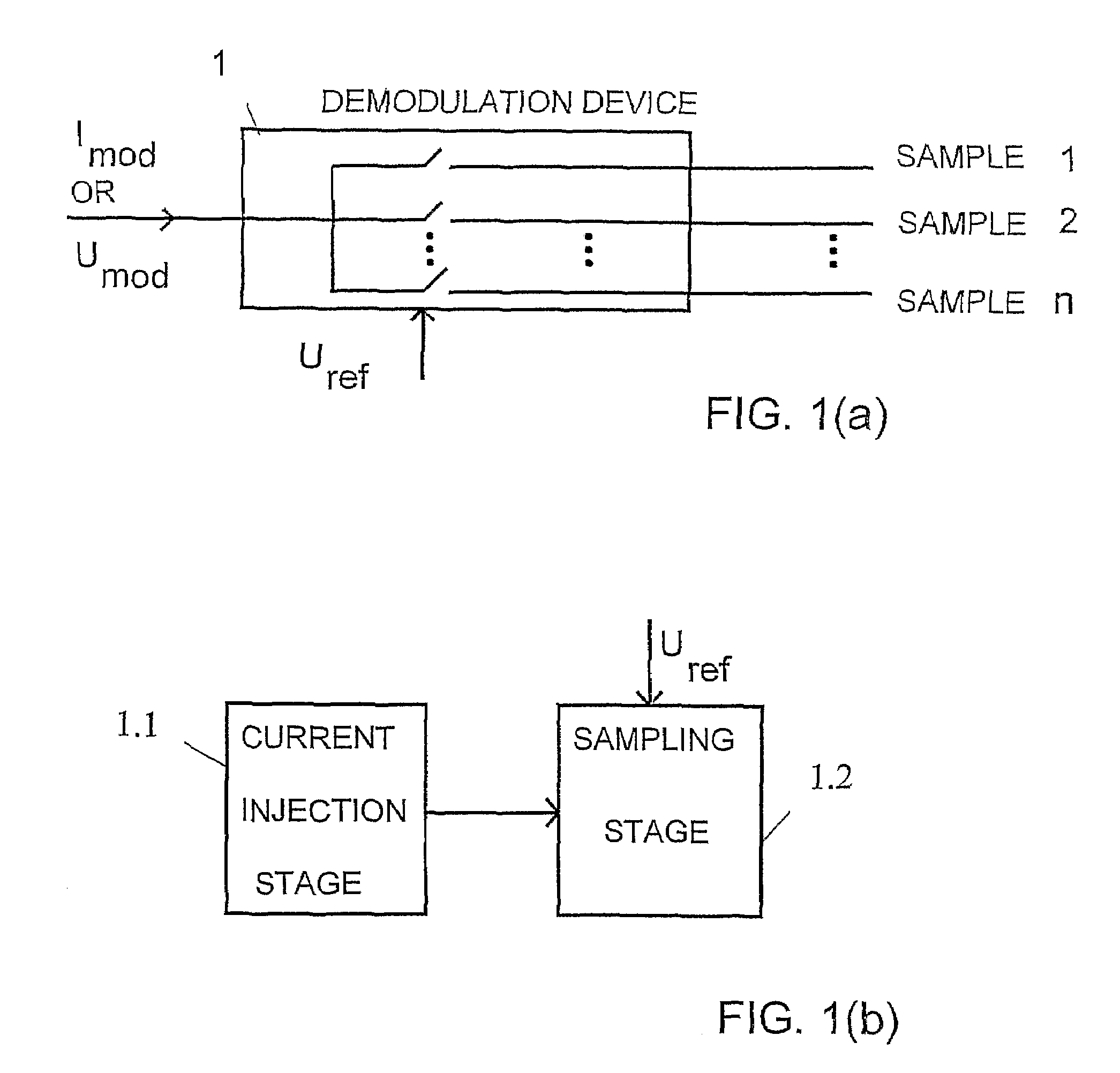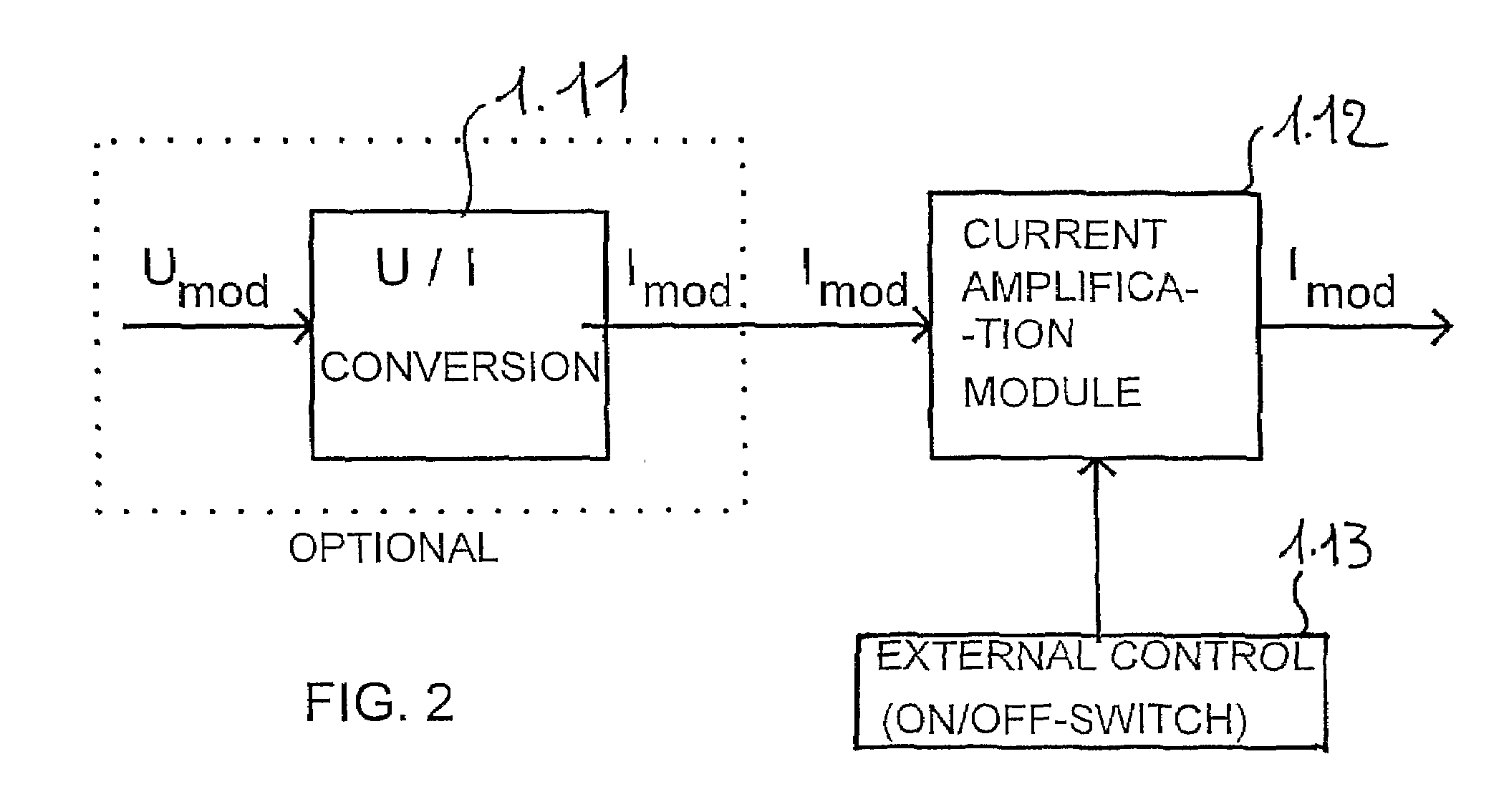Device and method for the demodulation of modulated electric signals
a modulated electric signal and device technology, applied in the direction of demodulation, electrical instruments, instruments, etc., can solve the problems of large circuit size, inability to implement as elements in high-density arrays, and inability to use mixing circuits for very small modulated current mixing, etc., to reduce the size of the new device, simplify the requirements of semiconductor process technology, and simplify the effect of operation
- Summary
- Abstract
- Description
- Claims
- Application Information
AI Technical Summary
Benefits of technology
Problems solved by technology
Method used
Image
Examples
first embodiment
[0050]the sample output stage 1.23 is shown in FIG. 4(a). The sample output stage comprises an accumulation module 1.230 and a charge-voltage converter 1.231. The accumulation module 1.230 is for example a capacitor which integrates the sample current. The integrated charge carriers induce a potential drop over the capacitor that can be read out by a further electronic circuit 1.231. Generally, additional amplification circuits such as e.g. a source follower are foreseen in order to drive the following analogue-to-digital converter circuit or any other electronics not shown in FIG. 4(a).
[0051]The second embodiment of the sample output stage 1.23 is detailed in FIG. 4(b). The sample output stage 1.23 comprises a direct current-voltage converter 1.235 aims at a direct conversion of the sample currents Isample_1, . . . Isample_n into corresponding sample voltages Usample_1, . . . Usample_n. As the accumulation module 1.230 of FIG. 4(a) is not provided in this embodiment, the sample out...
second embodiment
[0064]FIG. 8 shows preferred embodiments of the current-injection stage 1.1 of FIG. 1(b) linked to the sampling stage 1.2 through its injection node IN. In all four FIGS. 8(a)-(d), the modulated current Imod is mirrored using, e.g., the known electronic circuit consisting of two transistors called current mirror. The current Imod is thus amplified using this current-mirror circuit. The mirrored current is used as injection current to the sampling stage 1.2. A switch S controls the duration of current injection into the sampling stage. This switch corresponds to the external control 1.13 of FIG. 2. The switch S can be formed by one single transistor or a transmission gate. FIG. 8(b) illustrates particularly the conversion of the modulated voltage signal Umod into a modulated reference current Iref that is injected into the sampling stage 1.2. The voltage-to-current conversion is done using e.g. a condensator C. FIG. 8(c) illustrates the voltage-to-current conversion Umod into Iref. F...
PUM
 Login to View More
Login to View More Abstract
Description
Claims
Application Information
 Login to View More
Login to View More - R&D
- Intellectual Property
- Life Sciences
- Materials
- Tech Scout
- Unparalleled Data Quality
- Higher Quality Content
- 60% Fewer Hallucinations
Browse by: Latest US Patents, China's latest patents, Technical Efficacy Thesaurus, Application Domain, Technology Topic, Popular Technical Reports.
© 2025 PatSnap. All rights reserved.Legal|Privacy policy|Modern Slavery Act Transparency Statement|Sitemap|About US| Contact US: help@patsnap.com



